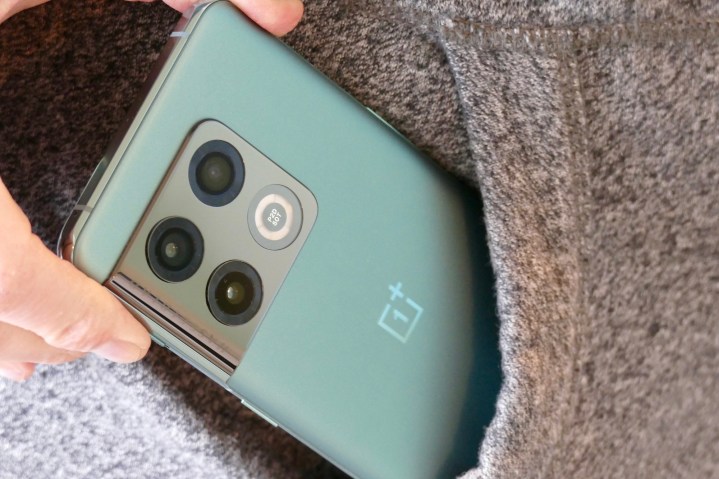Over the past few months, the leak arena has been buzzing about an upcoming all-out flagship called the OnePlus 10 Ultra, alongside whispers of a vanilla OnePlus 10. Well, it appears that a different name may be used for OnePlus’s next high-end phone, as the company is reportedly prepping for the debut of the OnePlus 10T later this year.
The OnePlus 10T is apparently the “next and only flagship phone coming this year,” according to the often reliable leaker Max Jambor. Up until the OnePlus 9 series, the Chinese smartphone maker has released a ‘T’ mid-year refresh of all its phones ever since the OnePlus 3T in November of 2016. Jambor later replies to the tweet an Ultra version isn’t expected.
Final name of the next and only flagship phone coming this year: OnePlus 10T 5G
— Max Jambor (@MaxJmb) June 1, 2022
So far, OnePlus hasn’t confirmed, or denied, the plans for an Ultra or vanilla OnePlus 10 model, despite leaks and rumors claiming otherwise. Tipster Yogesh Brar, who maintains a fairly reliable track record, recently claimed that the OnePlus 10 Ultra has entered the testing phase, and aside from the obvious Snapdragon 8+ Gen 1 chip upgrade, the phone will focus on camera improvements.
The latter is one area where OnePlus continues to lag behind its rivals. In our recent OnePlus 10 Pro vs Samsung Galaxy S22 camera showdown, the OnePlus flagship impressed with its wide-angle camera, but lagged behind Samsung’s significantly more affordable offering in key areas like low-light photography and zoom output.
So the OnePlus Ultra flagship is getting into testing phase, focus on cameras & SD 8 Gen 1+
OnePlus 10 – D9000/SD 8 Gen 1 (depending on market)
D8000 and SD888 in more Mid-range phones like Nord series
7 Gen 1 phone being planned.
Complicated timelines & products overall
— Yogesh Brar (@heyitsyogesh) May 3, 2022
The latest rumor of a OnePlus 10T, however, makes some sense. With the OnePlus 10T, it has the opportunity to fix some of the OnePlus 10 Pro’s drawbacks, such as refining the telephoto camera experience, expanding the dust and water resistance to markets, and polishing the software.
Brar’s tweet also mentioned that the OnePlus 10 will be up for grabs in two flavors — one with MediaTek’s Dimensity 9000 SoC, and the other one with Qualcomm Snapdragon 8 Gen 1, depending on the market preference. However, neither phone has made an official appearance so far.
Exactly what the OnePlus 10T will be — an updated OnePlus 10 Pro, the 10 Ultra under a different name, or a more basic version to replace the missing OnePlus 10 — remains to be seen. Previously, T-versions of OnePlus phones arrived around six months after the original release, so we should look toward September or onward for more official news, should it come.
OnePlus doesn’t need to go Ultra
Either way, it may be better received than an inevitably more expensive Ultra version. The OnePlus 10 Pro comes with an asking price of $899, which already makes it more expensive than some very capable rivals such as the iPhone 13, Google Pixel 6, and Samsung Galaxy S22. Going Ultra may push the OnePlus flagship into the $1,000 (or higher) price tier, where big names like the iPhone 13 Pro and Samsung Galaxy S22 Ultra offer a more polished package with venerable camera chops and far better software update policy.

For a brand that was once all about undercutting the cost of rival devices, an Ultra flagship doesn’t make a lot of sense. The OnePlus 9 Pro already raised eyebrows last year with a brave (read: premium) asking price, and the OnePlus 10 Pro isn’t too different. Eclipsing that threshold would be a risky test of brand loyalty for OnePlus, and a pricey leap of faith for customers who would be bypassing Apple and Samsung in favor of an Ultra flagship by OnePlus.
A phone called the OnePlus 10T, one that addresses some of its Pro variant’s failures or comes with a significantly lower price, might just be the right move.
Editors' Recommendations
- You may have to wait a lot longer for the OnePlus Open 2
- Six months later, is the OnePlus Open still worth it? I found out
- How this surprise OnePlus feature changed my smartphone photos forever
- OnePlus surprises us with dazzling Android tablet and smartwatch
- I did a OnePlus 12 vs. OnePlus 12R camera test, and there’s a big difference



